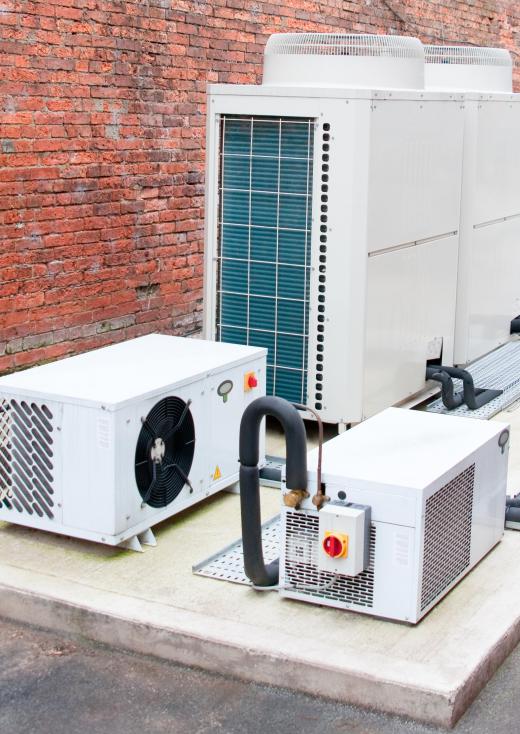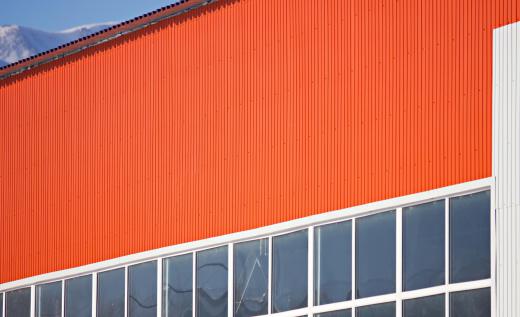Aluminized steel is basically steel that has been specially treated with an aluminum coating to make it stronger and more durable. Many manufacturers claim that it has all the best qualities of both aluminum and steel — it’s durable, largely heat-resistant, and doesn’t corrode under most normal circumstances. There are usually two main types. In the first, sheets of steel are coated with a combination of silicon and aluminum, with helps the materials stick together and improves heat resistance. It’s very common in household appliances like ovens and ranges, and in automobiles. The second type is usually simpler, and is made by dipping steel in pure aluminum. Both types result in a tight bond between the steel sheet and the aluminum coating, though pure aluminum coating is sometimes preferred in situations where there’s a lot of exposure to environmental elements, such as in siding or in external air conditioning units.
Production Process

Steel and Aluminum are both earth metals that have a number of common applications in the home and in industry. Each has its drawbacks, though; one of the goals of this sort of steel processing is to harness the biggest benefits of each metal and use them together in a multi-purpose composite.
Aluminum, when heated to a high enough temperature, will turn molten, or liquid. Aluminum-coated steel typically starts with liquid aluminum, either on its own or mixed with a small percentage of silicon to make an alloy. Sheets or formed pieces of steel are dipped into the molten solution, then allowed to cool, thus hardening the metals and bonding them to each other.
Two Basic Types

So-called “Type 1” aluminized steel is made with silicon alloy. The exact percentage usually depends on the specific intended use, but typically varies between 5% and 15%. The silicon aids in the adherence of the two materials and can also improve the metal’s tolerance of very high temperatures. The second type, “Type 2,” is coated with pure aluminum. In most applications the two can be used interchangeably, though may have different cost considerations, and may be more efficient for some uses over others.
Main Characteristics
Products made with either type exhibit the surface characteristics of aluminum with the strength and economic cost of steel. It is available in a variety of forms, including tubing and sheet coil stock, which make it very useful in mass production. Stainless and carbon-coated steels are produced in a variety of grade classifications and sizes, as well. When aluminum-coated versions are formed in a sheet stock, they can be easily stamped, broken, and bent to take on a wide variety of forms. Large coils of the material can also be cut to smaller or custom sizes, depending on the manufacturing purpose.
Primary Benefits
The production cost is generally low when compared with that of related materials like stainless steel. In most applications, stainless steel is stronger and more durable than aluminized versions, however. It is also less susceptible to rust. Stainless steel is often the common choice for items that need a very polished appearance, while aluminized options have a wide variety of uses in common household products. Manufacturers usually choose aluminized versions when utility — the ability to withstand and maintain high heats, power as an insulator, and resistance to environmental corrosion, to name a few — is of utmost importance.
Biggest Uses
There are a wide range of applications for residential, commercial, and industrial uses that can make use of both silicone composite and pure aluminum coatings. Automotive exhaust components use this sort of coated metal to withstand heat and prevent corrosion from constant exposure to the elements. Other popular uses include in furnace parts, ovens, ranges, and heaters. Fireplace inserts, water heater parts, and even baking pans are a few of the additional fabricated products made for residential use.
Corrugated roofing and siding, grain bins, air conditioner housings and drying ovens are often composed of this sort of coated steel, too. The energy, transportation, and appliance industries are major consumers of this specialty steel product. Agriculture, mining, and construction industries all benefit from aluminized steel products.
